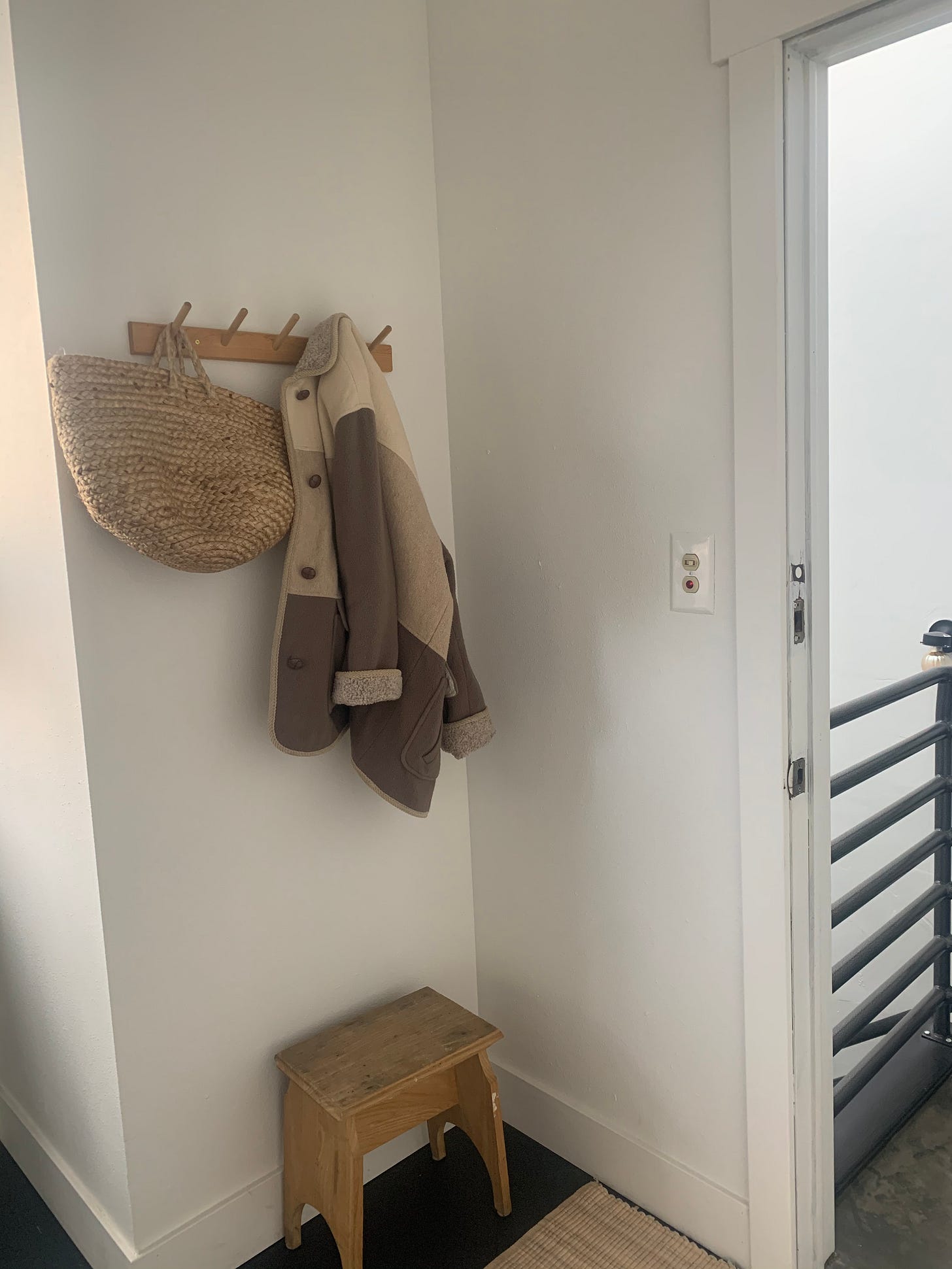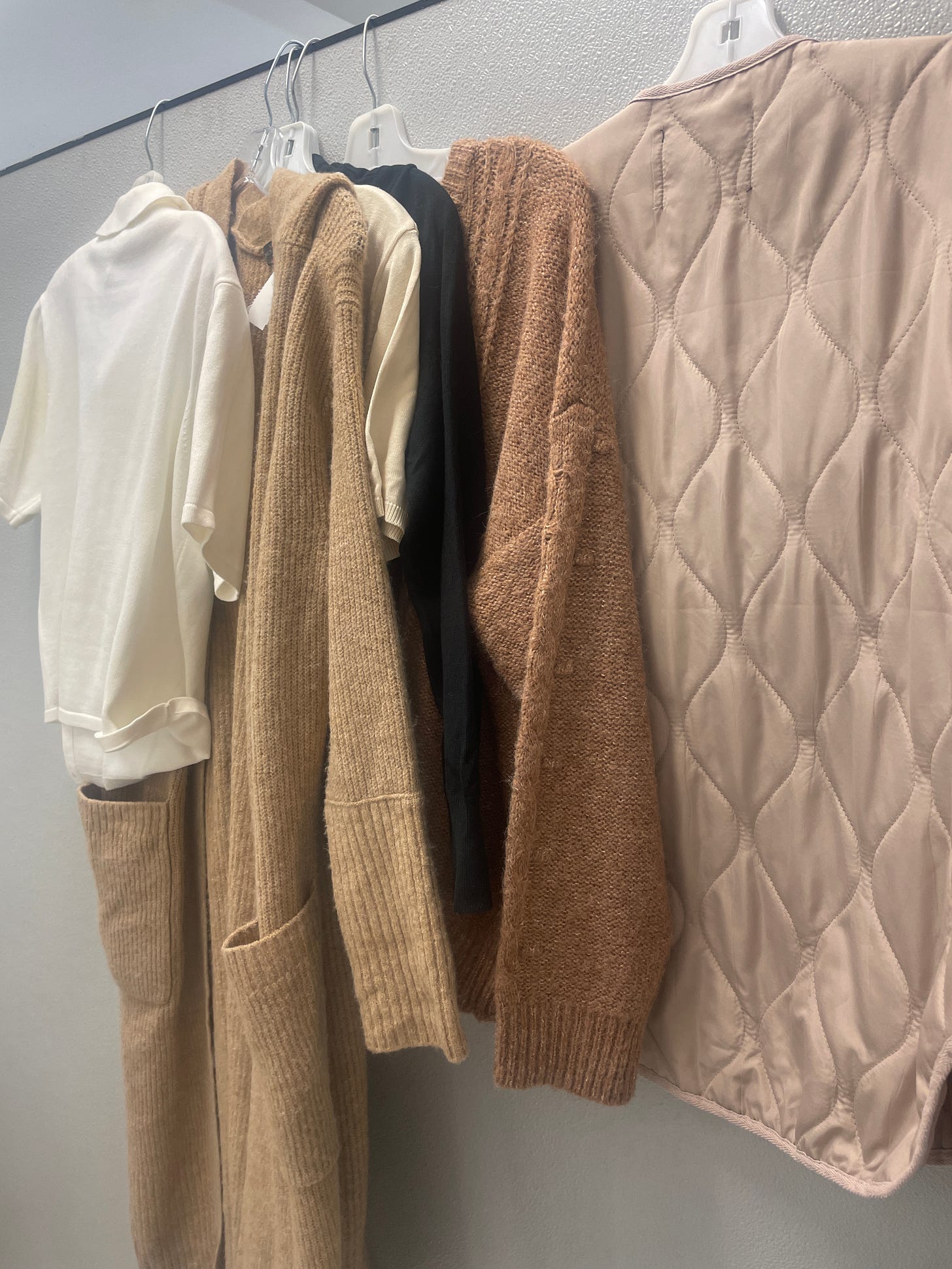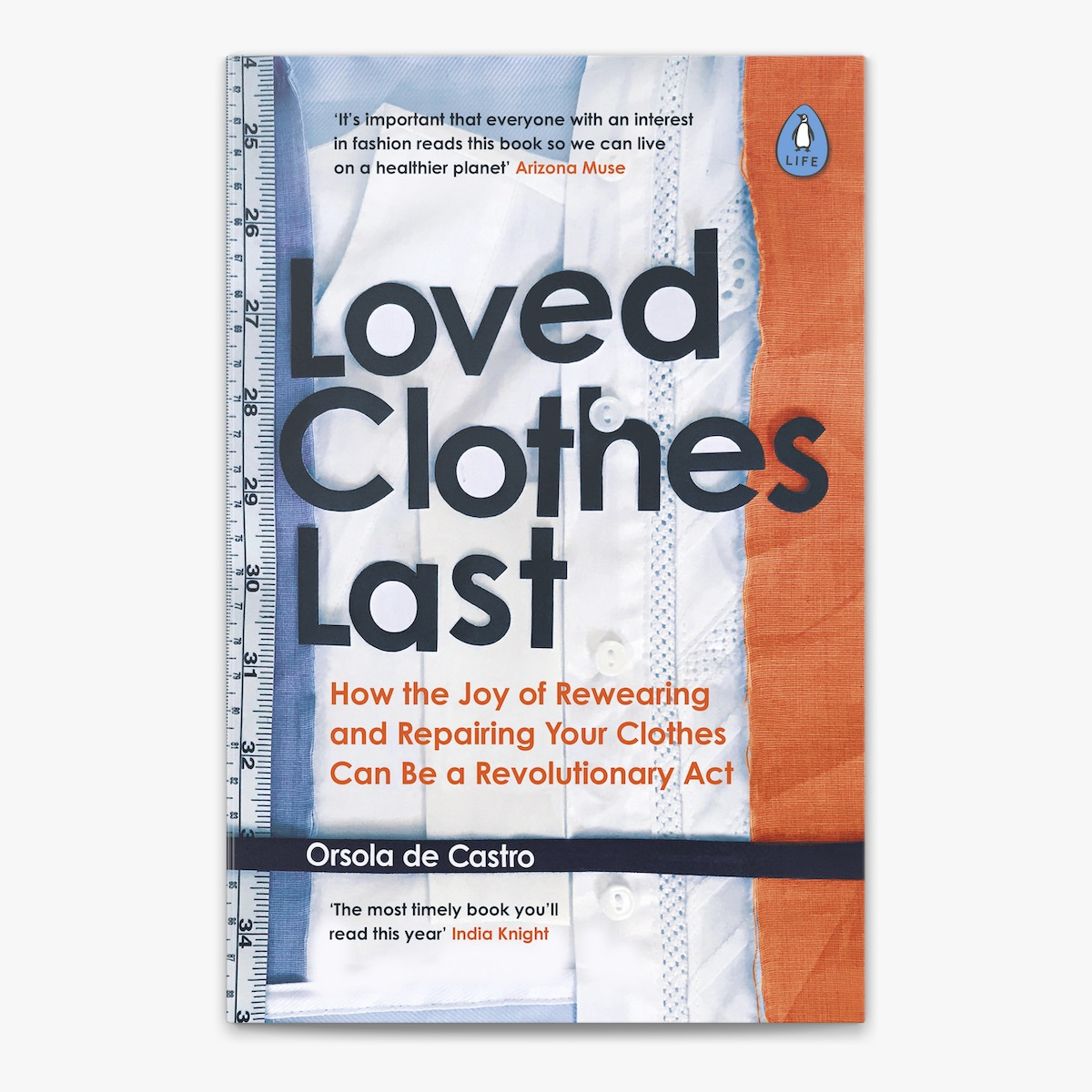Style Over Stuff
How I stopped shopping for a wardrobe and started building one—buying secondhand first, wearing on repeat, and say no to trends.
I ran into an old friend a few weeks ago—someone I hadn’t seen in over a decade—and the first thing she said to me was, “You still have that coat!?”
Naturally, our conversation (if you know me, you know) revolved around the fact that I still primarily shop vintage and secondhand, that I wear the same clothes year in and year out, and that while my style has evolved, it hasn’t changed so much that I constantly feel the urge to buy new pieces—unless it's a quality investment (sponsor me, CORDERA;). I also meticulously care for what I own (repair > replace). I love my clothes—proud #outfitrepeater here!
I’ve known this woman since college, back when my clothes were more “lost puppy trying on a lot of hats” (or should I say belts—everything was belted) than personal style. And while some of my choices were…questionable, I wouldn’t change a thing. They got me to where I am today. Thankfully, I was raised with a “shop secondhand first” mentality (my mama taught me well), so my experimentation never led to massive credit card debt or an overwhelming environmental impact.
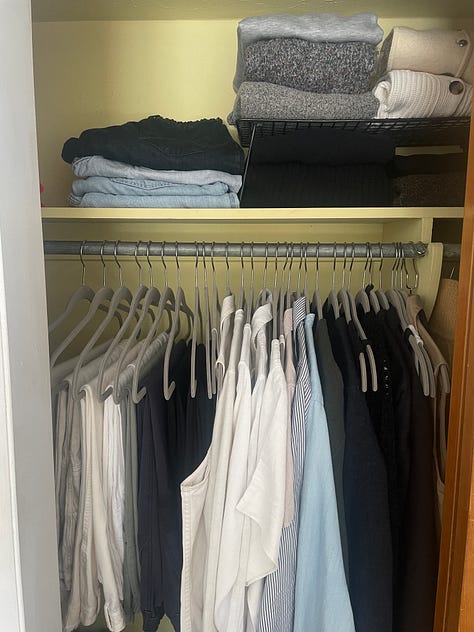
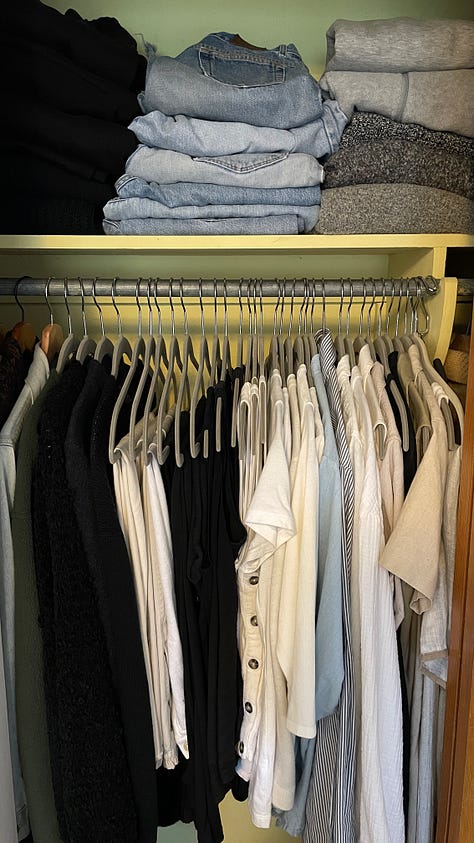
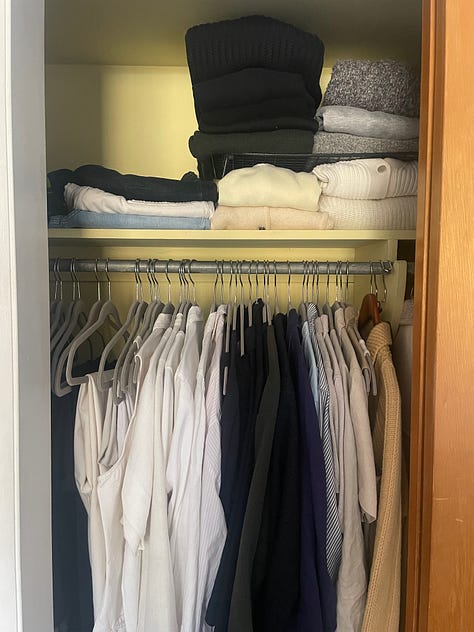
These days, I’m fully locked into my personal style —neutrals, natural fibers, contrasting textures, sculptural silhouettes—and am intentional about everything I choose to put on my body. Knowing exactly what works for me has completely changed how I shop and what I consume (in more ways than just fashion).
Over coffee, my friend and I kept circling back to the topic of styling vs. shopping, greenwashing in fashion, mindless consumption, and buying less. These conversations come up often in my day-to-day life (on IG, in DMs, with friends)—and I love it! I even pulled out my notebook to jot down some of her questions because they were so good:
What is personal style? (I wrote my BFA thesis on this 😉)
Can we buy our way into having "a sense of style"?
What's the difference between style, and sustainability in fashion?
What makes a brand, a piece of clothing, our style—or anything—sustainable?
Why do we think buying more clothes is going to fix our lives?
How many clothes do we really need? Is a capsule wardrobe the solution or just deprivation?
Why is there still such a stigma around shopping secondhand/used?
What I loved about our conversation was how her questions made me reflect on my approach to personal style, shopping, and consumption. At some point, I realized I’d been subconsciously following a specific shopping framework for years—without even noticing. These “guidelines,” if you could call them that, have helped me build my personal style and wardrobe that aligns with my ethics in a way that feels both intentional and sustainable.1
My style (and shopping) non-negotiables:
Never buy on impulse or to follow a trend.
Edit, add, and remove clothing with intention—everything is considered.
Regularly go through my entire wardrobe—touch everything, mentally catalog it. This keeps all my pieces top of mind and helps identify any gaps or repeats.
Upcycle, re-style, rework, or shop my own closet whenever I feel the urge to buy something new.
Tailor pieces that don’t fit properly—if it fits right, I’ll wear it more.
Repair, care for, and launder each item properly so it lasts as long as possible.
Shop vintage, secondhand, and local before buying new2. There are enough clothes on the planet already, and what I’m looking for likely already exists—I’ve just gotta find it! For me, that's half the fun—the treasure hunt of it all—finding something truly one-of-kind without impacting precious resources.
Choose natural fibers whenever possible.
Buy less, but buy better.
If I must buy new, I research a brand’s ethical and manufacturing practices and make sure not to add pieces that don’t align with my style and ethics..
Helpful questions to ask: Does this piece integrate into my existing wardrobe? Do I already own a white button-up cardigan? ;) Does it align with my style words or vision? Or am I just adding something I’ll never wear? Were the fabrics grown and produced responsibly? Were the humans who made this garment paid a legally enforced living wage3? Are their working conditions safe?
Getting older:) This has had the biggest impact on my style and shopping habits. Knowing exactly what I want and don’t want, what I like and don’t like. No longer chasing trends. I feel 100% dialed into what works for me, what aligns with my ethics, and what makes me feel good.
I didn’t realize how ingrained these habits were until I wrote them all out—but they’ve had a real impact and are second nature to me at this point. They might not work for everyone, but they work for me. They shape how I shop, how I choose to spend my time and money, and how I navigate capitalism and consumption. They've defined my relationship with the items that come into contact with my body.
By taking my time and being intentional with my wardrobe—accepting that it’s a lifelong process, not something you can just buy in a fashion haul4—I’ve found a style that feels right for me, without being too rigid. Along the way, I’ve learned a lot about myself and the realities of the fashion industry. And here’s the uncomfortable truth:
It’s easy to buy the first thing we see on Google, Amazon—wherever. To chase trends. To impulse-buy from a social media ad, even when we know it was made under brutal conditions, designed to fall apart, and is destined for a landfill. I get it—research takes time, and convenience often wins. But if we care about what we wear, about the people who make it, about the planet we live on, we have to do better. Buy secondhand, pre-loved, vintage whenever possible. Buy fewer things, but better things. The way we shop shapes the world we live in—so let’s be more intentional about it!5
"If you love the clothes you wear—then you will look to where the clothes that are right for you are made. You must take the time to seek them out … I want to keep my clothes on my body for three decades, not three wears. That’s the difference, and it’s a cultural difference…” — Orsola de Castro, on FASHION NEWS: February 9, 2025
If you’re unfamiliar with Orsola de Castro’s decades-long work, or her book Loved Clothes Last, please pick up a copy from your local bookstore or library today!
If you have your own shopping practices, styling methods, or ethical guidelines—I’d love to hear them. Please do share!
If you enjoy this content, share it with someone you think would like it too!
Leave a comment and/or a like, engagement is always helpful :)
If you’d like to support LBWL, consider making a donation. Thanks—Renée
I don’t (and refuse to) use the word sustainable arbitrarily—because "sustainability" is a myth. But in this case, I’m referring to a wardrobe that is built practically, and ethically, with environmental, equity, and economic impact in mind.
Undergarments, health, and sanitary items should always be purchased new—it goes without saying;)
https://goodonyou.eco/the-impact-of-a-living-wage-for-garment-workers/
https://www.muccycloud.com/2022/02/fashion-hauls-destroying-planet.html
I understand and empathize that we’re all working hard just to get by, and time and money aren’t things we have to spare. My goal isn’t to shame anyone for buying a $6.09 petrolatum-based sweater from Walmart because it’s what they can afford or have time for. I’m simply asking that, when we can, to make small changes—choosing pieces that won’t fall apart after one wash, leach toxic chemicals onto our skin and into our waterways, or force us to keep rebuying the same thing. Spending $6 multiple times a year adds up fast. A single $30–$50 sweater that actually lasts? That’s money well spent. You work hard—you deserve clothes that do, too.





